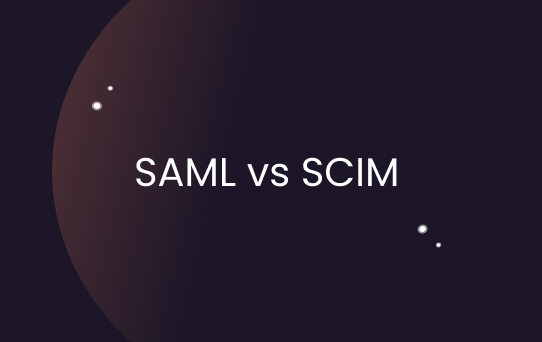SAML vs SCIM
SAML (Security Assertion Markup Language) and SCIM (System for Cross-domain Identity Management) are two critical protocols in the realm of identity and access management. Both SAML and SCIM exist to enhance security and simplify authentication, but they serve slightly different functions.
Purpose and Use of SAML
SAML is an open-standard data format used for exchanging authentication and authorization data between parties. It enables a single sign-on (SSO) system, allowing users to log into multiple applications and services with a single set of credentials. SAML is especially useful for businesses that use multiple SaaS applications, eliminating the need for users to remember multiple password and username combinations and reducing the risk of phishing attacks. As part of its cybersecurity measures, SAML incorporates digital signatures and encryption methods for secure transmissions. It's a common protocol used by various organizations and services to assure secure access for users.
Purpose and Use of SCIM
On the other hand, SCIM is a standardized protocol for managing user identities in web applications. It was designed to make identity management in cloud-based applications and services easier by simplifying user provisioning and management. SCIM accomplishes this by automating the exchange of user identity information among different systems. SCIM finds its application primarily in DevOps for automating the creation, updating, and deletion of user identities across various systems automatically. Its adoption is common in large organizations with complex IT infrastructure, where managing user identities can be a considerable challenge.
Two Key Players in Identity and Access Management (IAM)
In IAM, SAML and SCIM form the backbone of access control strategies. They provide a robust mechanism for enforcing the principle of least privilege access. With SAML and SCIM, administrators can easily grant temporary access and manage permissions effectively, thereby bolstering the company's cybersecurity posture. Their usage has become a norm in modern age businesses, particularly those leveraging cloud-based solutions.
SAML vs SCIM in Cloud Infrastructure
In the context of cloud infrastructure and SaaS, both SAML and SCIM play pivotal roles. While SAML assures secure user authentication across various applications and services, SCIM simplifies identity management. This combination enhances the overall cybersecurity framework. For example, when an employee leaves the company, their identity can be instantly removed from all systems, reducing the risk potential security breaches.








